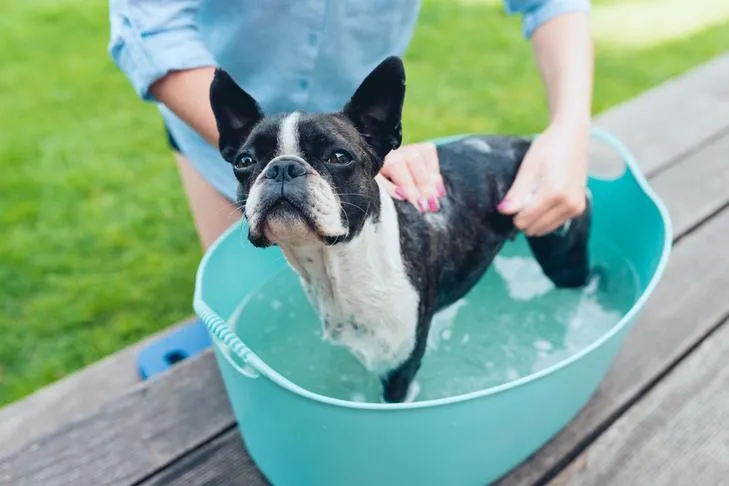If your dog is scratching excessively or you notice unusual flakes in its fur, you might wonder about parasites like lice. The primary concern for many pet owners is dog lice, a common but treatable infestation that affects dogs but not humans. Fortunately, dog lice are species-specific, meaning you can’t get lice from a dog, just as dogs can’t contract human lice. However, ignoring the signs can lead to discomfort, skin issues, and secondary infections for your furry friend.
This guide breaks down everything you need to know about dog lice, from identification to prevention, drawing on veterinary expertise to help you keep your dog healthy and itch-free.
What Exactly Are Dog Lice?
Dog lice are tiny, wingless insects that parasitize dogs by living in their coat and feeding on skin debris, oils, or blood. According to the Merck Veterinary Manual, these pests have specialized claws that grip dog hair shafts perfectly, explaining why they don’t transfer to humans or other species like cats.
There are two main types:
Chewing Lice
These lice munch on skin flakes and secretions. The most common species on dogs is Trichodectes canis, found worldwide, and Heterodoxus spiniger, more prevalent in tropical areas like parts of Mexico and seen on wild canids such as coyotes and wolves.
Sucking Lice
Species like Linognathus setosus pierce the skin for blood meals. They’re common in warmer climates across the Americas, Africa, Asia, and India, posing a bigger risk for anemia in puppies or small breeds.
Adult lice measure 2-4 mm, resembling sesame seeds in yellow, tan, or brown hues. Unlike fleas, they can’t jump or fly, limiting their spread.
 Golden Retriever scratching an itch on its head outdoors.
Golden Retriever scratching an itch on its head outdoors.
Key Signs of a Dog Lice Infestation
Spotting dog lice early prevents escalation. Adults are visible by parting the fur, especially around the neck, ears, shoulders, groin, and tail base. Chewing lice scurry quickly, while sucking lice stay attached like ticks.
Owners often confuse nits (lice eggs) with dandruff—shake out fur samples: dandruff flakes off, but nits stick firmly. Common symptoms include:
- Intense itching and scratching, leading to restlessness
- Dull, matted, or dry coat with visible hair loss
- Red, inflamed skin or sores from bites
- Bacterial infections or wounds, particularly from sucking lice
- Anemia in severe cases, especially puppies
- Secondary issues like tapeworms transmitted via lice
Use a flea comb for confirmation: immerse it in soapy water post-use to kill lice. If unsure, consult a vet for a close examination.
For related concerns, check if a dog can get human head lice or other parasites.
How Do Dogs Contract Lice?
Lice spread primarily through direct contact with infested dogs, such as at parks, daycares, or kennels. They can’t hop or fly, and adults die quickly off-host. Indirect transmission occurs via shared bedding, collars, or grooming tools.
The life cycle spans 3-4 weeks: Females glue eggs (nits) to hair bases—they resist shampooing. Nymphs hatch in 7 days, mature in another week, and repeat. Stray, elderly, or neglected dogs are most vulnerable due to weakened immunity and poor hygiene.
Preventive measures like routine flea/tick meds reduce risks significantly.
Effective Ways to Eliminate Dog Lice
Lice are rare in well-maintained pets thanks to monthly preventives, but treatment is straightforward. Start by clipping matted fur where eggs hide, then comb thoroughly. However, combing alone misses eggs.
Veterinarian-recommended insecticides include fipronil, imidacloprid, selamectin, and permethrin-based topicals—always confirm safety for your dog’s age, breed, and health, per AKC Chief Veterinarian Dr. Jerry Klein. These kill adults and nymphs but not eggs, so repeat every 7-10 days for 3-4 weeks.
In multi-dog homes, treat all pets simultaneously and isolate the affected one for 4 weeks. Wash bedding, toys, and accessories in hot water; discard or deeply clean grooming tools. Cats require caution, as some products are toxic to felines.
Long-term, boost your dog’s health with quality nutrition, regular grooming, and clean environments to deter reinfestation. Learn more about lice in dogs and how to get rid of it.
 Boston Terrier getting a bath in a tub outdoors.
Boston Terrier getting a bath in a tub outdoors.
Related reading: Can a dog get lice from a human?
Prevention Tips for Lice-Free Dogs
Beyond treatment, proactive steps are key. Use vet-approved flea/tick preventives year-round, even indoors. Inspect new or boarded dogs closely. Maintain hygiene: bathe monthly with gentle shampoos, brush regularly, and launder accessories often.
For high-risk areas like kennels, quarantine new arrivals. A robust immune system via balanced diet and exercise helps dogs resist parasites naturally.
Final Thoughts on Managing Dog Lice
Dog lice, while uncomfortable, are manageable with prompt action—recognize signs like itching and nits, treat thoroughly with vet guidance, and prevent through hygiene and preventives. Your vigilance ensures your dog’s comfort and health.
Consult your veterinarian for personalized advice, and explore more on parasite control like can humans get ear mites from puppies. Share your experiences in the comments!
References
- Merck Veterinary Manual: Lice of Dogs
- AKC Expert Advice on Dog Health and Parasites
